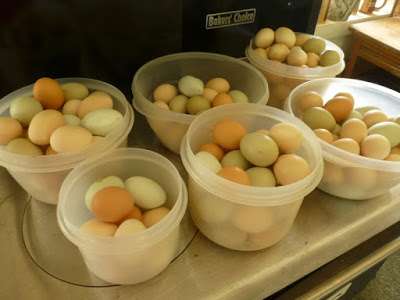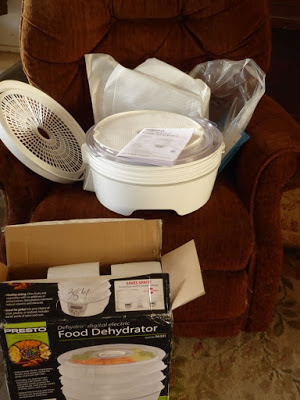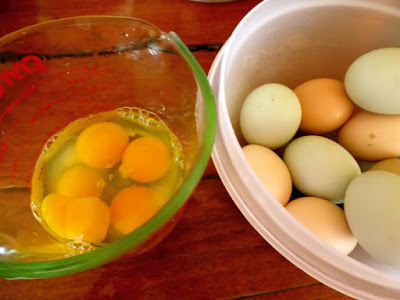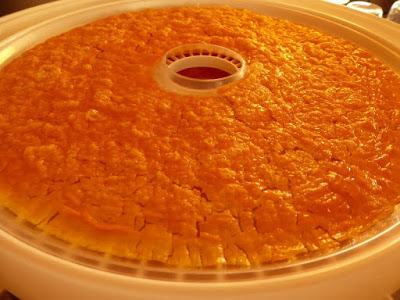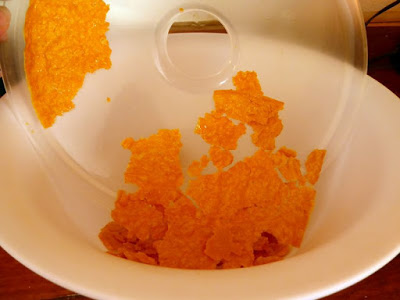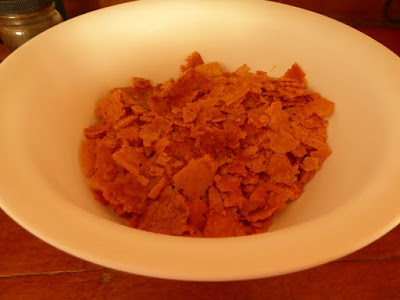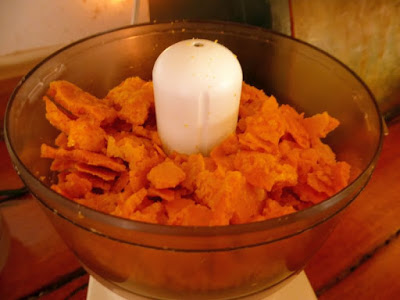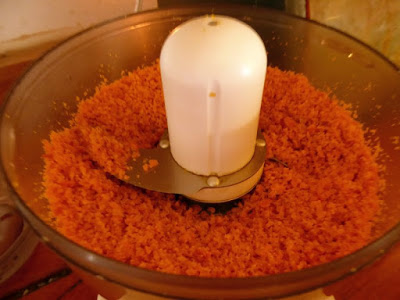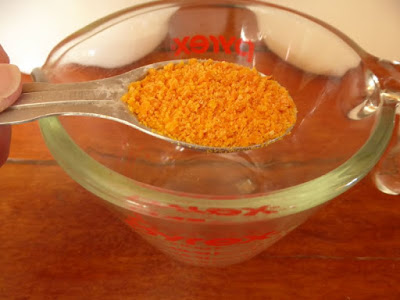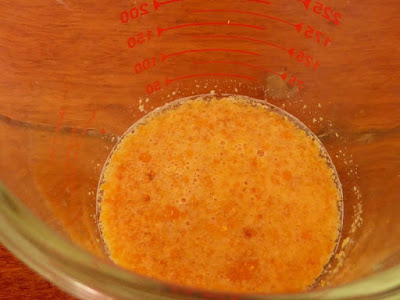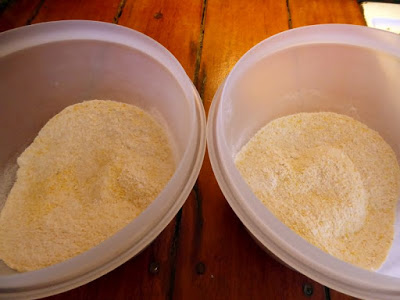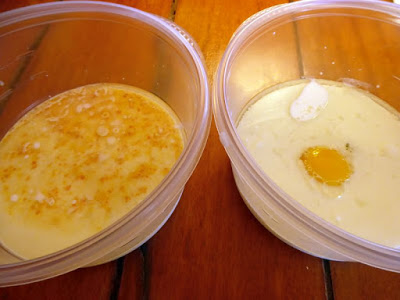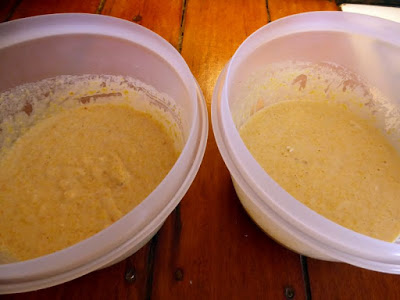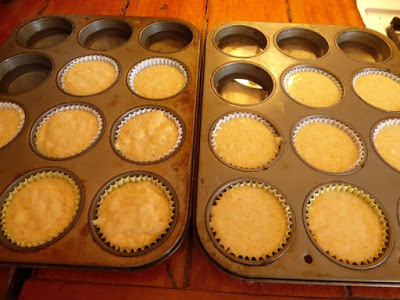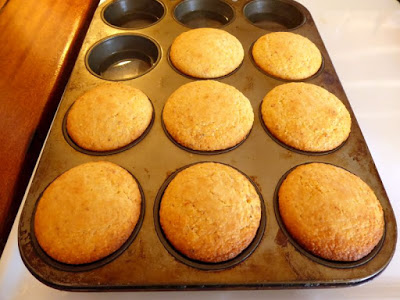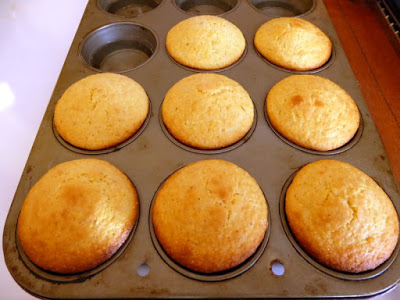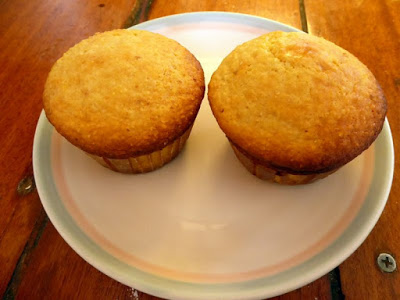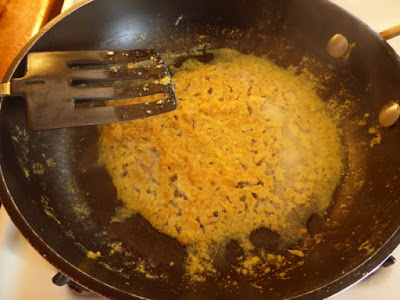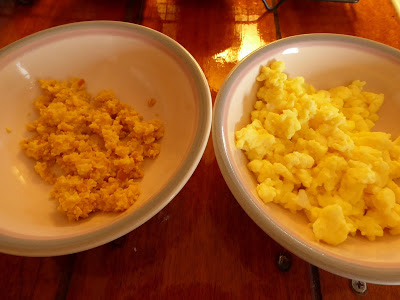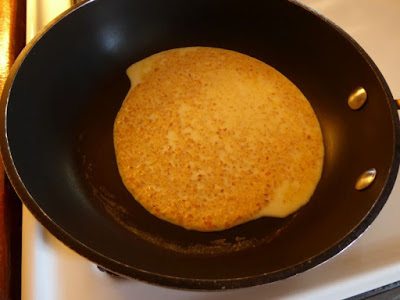| Online: | |
| Visits: | |
| Stories: |

| Story Views | |
| Now: | |
| Last Hour: | |
| Last 24 Hours: | |
| Total: | |
Dehydrating eggs
[The photos in this blog post are numbered since they are potential illustrations for a Backwoods Home Magazine article. This post is also more abbreviated than usual since the bulk of information will be contained in the article]
Over the summer, we had — to put it mildly — a glut of eggs. I wanted to find a suitable way to preserve the excess.
(Photo 326)
While there are numerous ways to preserve eggs, for a variety of reasons I wanted to experiment with dehydrating. There are many online references to the ease of dehydrating eggs, but nearly all of them admitted the potential for salmonella. Almost every reference I saw, people dehydrated their eggs at temperatures ranging from 125F to 145F. After some research, we learned that temp is too low, and 160F minimum (I bumped it to 165F to be safe) was necessary to keep salmonella from forming during the dehydration process.
We were in the market for a dehydrator anyway, so I began looking for a machine that achieved that temperature. To my surprise, even the most expensive dehydrators didn’t go that high. I had better success with the lower-priced dehydrators and ended up ordering a Presto Digital Electric Dehydrator (model 06301) for about $65 on Amazon. I also ordered fruit roll sheets for each tray, since these are necessary to hold the liquified eggs.
(Photo 743)
Dehydrating is simple. I took five eggs at a time and blended them in a blender for a few seconds…
(Photo 756)
…then poured the liquified eggs carefully on the fruit roll sheet on each tray. The dehydrator came with six trays, which meant I could dehydrate 30 eggs at a time.
(Photo 757)
I set the temperature at 165F for ten hours.
(Photo 759)
At the end of this time, the dried eggs resemble thin peanut brittle, and the color is dark orange. (I learned that commercially dehydrated eggs are “de-sugared” before being dried, which better preserves the color and texture of the original egg.)
(Photo 746)
(Photo 747)
Some people recommend lightly oiling or spraying the fruit roll sheets so the dried eggs will slide off more easily, but I found this is absolutely NOT the case (at least, not with these particular fruit roll sheets). The eggs just slid off.
(Photo 748)
This is 30 eggs’ worth of dehydrated stuff. Very compact.
(Photo 749)
I used our mini food processor to grind the dried eggs.
(Photo 750)
(Before)
(Photo 752)
(After)
(Photo 751)
30 eggs came to about four cups of granules. The dehydrated eggs have a “greasy” feel, but this is normal.
(Photo 754)
The next step was learning how well dehydrated eggs performed. To rehydrate, use a 2:1 ratio of water:egg powder. Here’s one tablespoon of eggs powder…
(Photo 203)
…mixed with two tablespoons of water. Let it sit for a few minutes.
(Photo 205)
To test the dehydrated eggs in baking, I made two identical batches of cornmeal muffins. Here are the bowls of dry ingredients:
(Photo 208)
Here are the bowls of wet ingredients (dehydrated egg version is always on the left):
(Photo 207)
Ingredients mixed together.
(Photo 209)
Spooned into muffin cups, ready to bake. (By the way, I hope everyone knows the trick of filling any empty muffin spaces with water so as not to warp the pan during baking.)
(Photo 211)
Baked. This is the dehydrated egg version:
(Photo 212)
This is the fresh egg version:
(Photo 213)
Dehydrated version on the left, fresh egg version on the right. They look slightly different in size, but in fact they were almost identical (just my bad photography).
(Photo 214)
Cut open.
(Photo 215)
I couldn’t taste the difference. I gave a “blind taste test” to Younger Daughter, and she couldn’t tell the difference either. I give dehydrated eggs a “thumbs up” for baking purposes.
But what about direct eating? I scrambled two fresh eggs:
(Photo 219)
And I “scrambled” two tablespoons of rehydrated eggs (4 tablespoons of water):
(Photo 221)
There was no comparison. The rehydrated eggs were absolutely revolting (not to mention half the volume of the fresh eggs).
(Photo 222)
I tried rehydrating the dried eggs with milk instead of water…
(Photo 223)
…and the result was just as bad. MAJOR “thumbs down” for direct eating of rehydrated eggs.
(Photo 224)
Other people claim success in direct eating of dehydrated eggs, but I sure didn’t.
Conclusion: Dehydrating eggs isn’t worth it if you have to purchase eggs, but absolutely worth it if you have a surplus of your own eggs. But be safe — don’t dehydrate at temps lower than 165F or you risk salmonella poisoning.
I’m storing my dehydrated eggs in the freezer at the moment, but I will also fill some pint jars and use an oxygen absorber and store them in my canning closet, which is cool and dark.
Source: http://www.rural-revolution.com/2015/09/dehydrating-eggs.html




